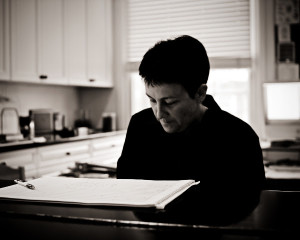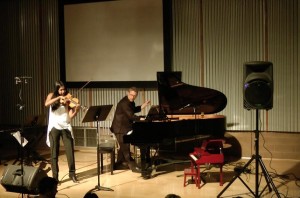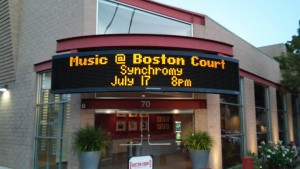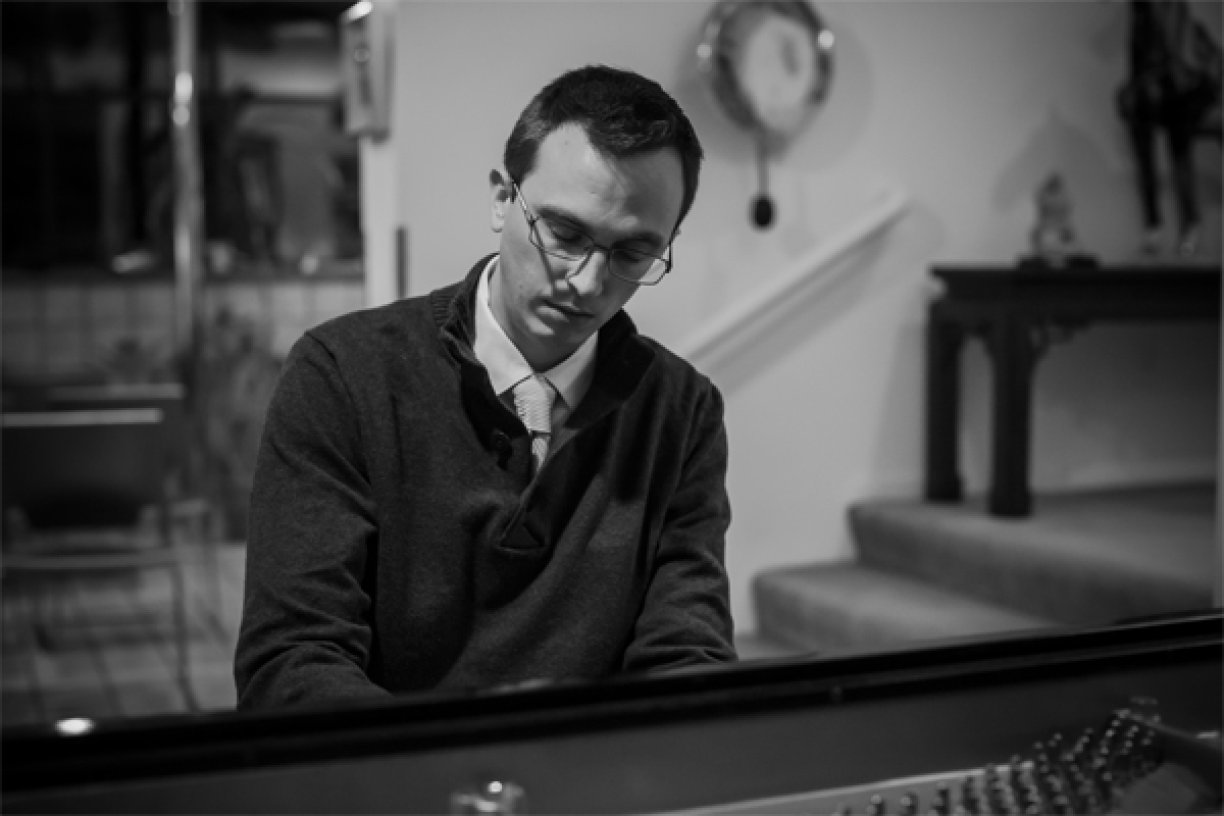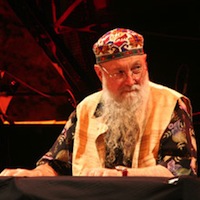As well as being one of the major figures in the music of the second half of the twentieth century, Pierre Boulez has had a long and important relationship with the BBC and with the Proms, so it is not surprising that the celebration of his 90th birthday would be one of the prominent strands of the programming of this year’s Proms season. The Proms concerts on August 12 and 13 presented the first performance at the Proms of a major orchestral work of Boulez’s and placed it in a context of musical and orchestral tradition in which it stands.
Figures-Doubles-Prismes, written in 1957-8, and revised in the later 1960s, is a product of the heyday of post World War II European zero-hour modernism, but it is also, more personally, Boulez’s response to Stockhausen’s Gruppen, whose first performance he had participated in as one of the three conductors. Like Gruppen, Boulez’s work is for three orchestral groups, but deployed on one platform rather than spatially around the audience. As its title implies, the work’s constructive methodology involves a series of ideas of varying lengths which are presented (figure), varied (double), and extended and refracted in various ways (prisme), whose various statements and progresses are cross cut and proliferate over and through the three instrumental units. The result is a kaleidoscopic succession of textures of greatly varying densities and a wide array of different orchestral sonorities, many of which are strikingly and beautifully calculated, presented in a state of harmonic stasis. The command of all these elements and the brilliance of the orchestral writing is fearsome and impressive. The performance by The BBC Symmphony, which looked very cramped on the stage of the Albert Hall, conducted by François-Xavier Roth. was a model of clarity and probably got the right combination of beauty of sound and emotional coolness.
The August 12 concert made the connection between Boulez’s music and that of the second generation before him, Stravinsky and Ravel, which, if it wasn’t important to his compositional career (and I think it was), was certainly a major aspect of his career as a conductor. The most explicit connection was represented by Boulez’s orchestration of Ravel’s Frontisipice, a very short (two minute long) piece which Ravel wrote in 1918 as a frontispiece to the publication of an extract of S. P. 503: Le poème du Vardar by the Italian poet Ricciotto Canudo which concerned the author’s experiences during the First World War (S. P. 503 was the postal code of Canudo’s unit). Ravel’s score of the work is on five staves; it seems to have been intended for two pianos, five hands, or possibly for pianola. Boulez, in one of his Domaine Musical concerts in 1954, presented what is thought to be the first public performance of the piece; he later orchestrated it for a small orchestra in 1987, and then for full orchestra twenty years later. This concert also included Ravel’s Concerto for Left Hand, played with enormous brilliance and beauty by Marc-André Hamelin (he also played very beautifully, with both hands, as an encore Debussy’s Reflets dans l’eau). The concert ended with the complete Firebird ballet of Stravinsky. As a whole The Firebird has a good number of stretches of brilliant orchestration of not much of musical interest, but in the bits that ended up in the suites there’s a lot of power, and certain places, most especially the beginning of the finale, are down right thrilling. This performance realized all of its virtues.
The Proms of August 13, presented by the BBC Philharmonic, conducted by Juanjo Mena, included a major work of Boulez’s teacher Olivier Messiaen, The Taurangalîla Symphony. It’s hard to know where to start in describing or discussing Taurangalîla. It’s excessive and completely over the top and it’s brilliant in its orchestral writing and it’s quite long (75 minutes, according to the program) and it has a lot of the vigor and liveliness of complete tastelessness (although taste is not any kind of valid standard for judging it) and it’s very complex rhythmically and musically inventive. It’s also very static harmonically (once again, no valid standard–it’s probably part of its appeal). It’s one of those pieces that convinces me that Messiaen had no sense of humor whatsoever. The performance of this ecstatically excessive piece was completely go for broke and it was very effective, although somehow less fun that I’ve found other performances of the piece I’ve heard to be. The playing of the pianist, Steven Osbourne, was always gorgeous–with lots of color and always with very very beautiful sound. From where I was sitting, since her back was to me, and the speakers of the instrument faced in some other direction, I don’t think I every heard much of Valérie Hartmann-Claverie, who played the Ondes Martinot, ostensibly the other solo instrument. I did seem to notice (or at least get the impression), though, that everything the OndesMartenot does is doubled somewhere in the orchestra.
This program began with John Foulds Three Mantras. There was, of course, no connection between Foulds and Boulez, but it was connected thematically with Sanskit/Hindu elements of the Messiaen. Foulds lived from 1880 to 1939, making him part of the same generation as Holst (who also had a lot of interest in Hindu religious philosophy) and Vaughan Williams. The Mantras, apparently part of an unrealized projected ‘Sanskrit opera’, Avatara, were written between 1919 and 1930. They call for a large orchestra, including a wordless female chorus, and sound a little something like parts of The Planets. Iin terms of the orchestral writing, the Mantras are pretty impressive. Although it was less interesting, at least to me, than Holst’s music usually is, it was still not at all uninteresting or unpleasant to listen to, and I was glad to have run across them, even if I probably won’t go out of my way to hear them more.
